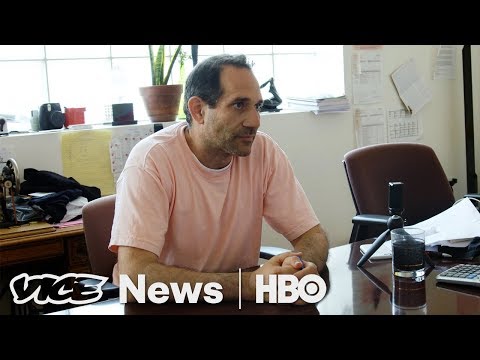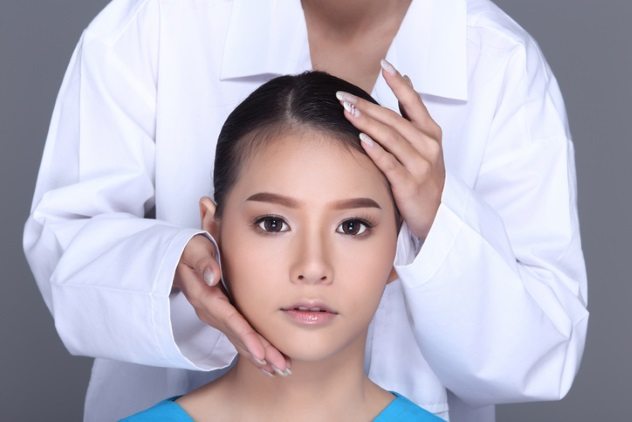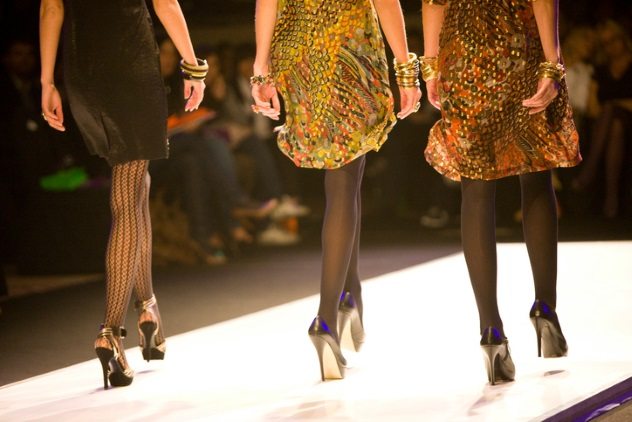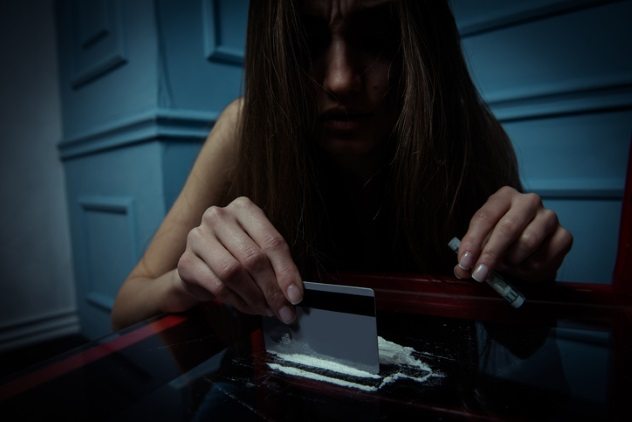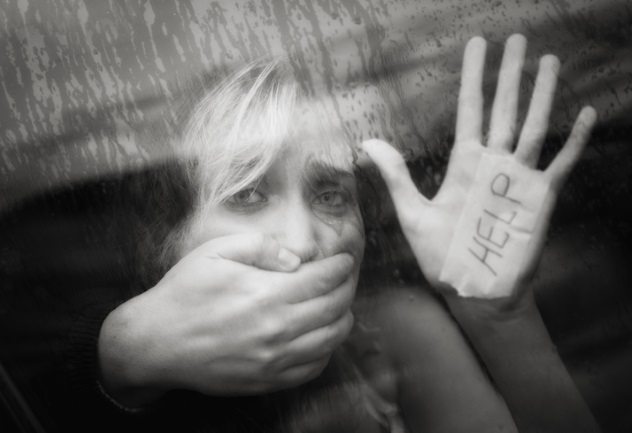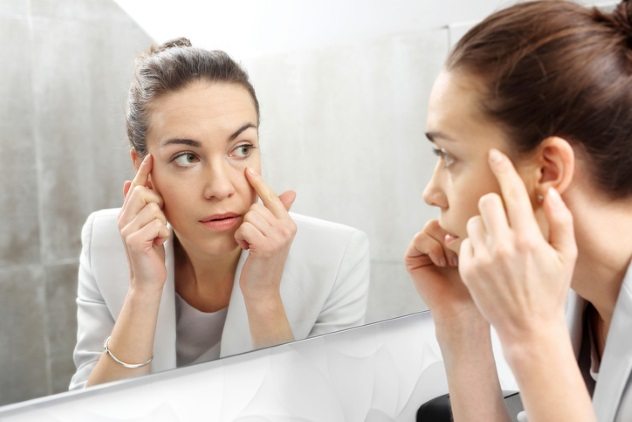The sad reality is that the modeling industry lures in young people who have dreams of fame and abuses them in more ways than one. Their stories are often a mystery to those who are not involved in the industry. These unattainable ideals plastered in the media aren’t just damaging to the models themselves but to society as a whole. We truly have no idea just how messed up the life of a professional fashion model can be.
10 Unaccompanied Minors
In many cases, models start their careers when they are just 13 years old. In a documentary called Girl Model, a 13-year-old named Nadya is recruited as a model during an audition in Siberia. She flies by herself to Japan, where she is instructed to lie about her age, because 15 is the minimum age requirement there. Nadya wears layers of heavy makeup and is made to pose provocatively in front of the camera. Without the proper paperwork, no one bats an eyelash as barely pubescent girls get work overseas on a regular basis. Backstage at a runway show, models are all getting undressed in front of stylists, designers, photographers, and journalists. They are not allowed to have any modesty or privacy, which means that minors are exposed for everyone to see on a regular basis. The New York Department of Labor did not protect the rights of child models until 2013, after a series of child sex trafficking cases happened in the deregulated industry. Even after the changes were made, it really only required working permits and mandatory breaks every four hours. It still does not fix the issue of exploiting young girls.[1]
9 Poverty And Debt
Many have imagined life as a world-famous supermodel who gets to travel the world and live in luxury homes. In reality, only a tiny fraction of models actually get to that point in their careers. When they are still new, models live in crowded city apartments owned by the agencies so that they can go to auditions. There are usually four to six people sleeping in bunk beds arranged in a studio or one-bedroom apartment. To make matters worse, agencies typically charge their models five times the market rate on rent. Models are only paid after the agency is reimbursed for the rent and travel expenses they provided in the beginning. Many aspiring young models realize they no longer want to live that lifestyle and actually end up in debt to the agency. If they choose to keep going, and they need more money, they can borrow against their future earnings from the agency, which charges interest for doing so. Even when a model can climb out of the debt cycle and become successful at her job, the true average salary is around $48,000 per year.[2]
8 Working For Trade And Exposure
With social media playing such a huge role in marketing today, it’s no longer good enough to simply have some great headshots before an audition. Many aspiring models choose to post themselves on Instagram. Many times, gaining a healthy social media following before getting paid has become an essential part of the modeling business, and it can even lead to jobs. Companies like Glossier have hired amateur models directly through Instagram. However, the amateur photo shoots are essentially working for free in order to get exposure.[3] World-famous supermodel Karlie Kloss posted a video on her YouTube channel explaining how in her early modeling days, she was very lucky that her family supported her modeling career. They even moved from St. Louis to New York so that she could commute into the city for auditions. She did not need to go into debt like many other young girls do. As a teenager, Kloss worked in exchange for free clothing. In some cases, if a model works with a fashion designer who ends up becoming famous someday, this strategy can pay off in the long run. Today, Kloss’s clothing collection from her for-trade work is worth thousands of dollars. Unfortunately, for models who do not have support from their parents and actually need to pay their debts to an agency, that plan will not work. “The best shows to do, especially in the beginning, were for-trade. I didn’t care about money. I cared about clothes,” says Kloss.
7 Sexual Abuse
One of the biggest scandals in the fashion world was the revelation that Dov Charney, the founder of American Apparel, was sexually harassing his models and female employees during photo sessions and at his factories. He would force women to pose nude or half-nude and persuade them to have sex in exchange for work. He was forced to step down as the CEO of his own company. Charney is not the only man who is guilty of sexually abusing models in the fashion industry. He is just the most unapologetic and downright proud about the entire thing, calling himself a “pussy fanatic.” Even after this public scandal, Charney maintains that his behavior is normal in the industry. His new office even has a mattress on the floor with condoms sitting next to it, totally shameless. During an interview, he was asked if he believed he really could make a comeback from the scandal. He chuckled, as if the question was ridiculous, saying, “People are still listening to Michael Jackson!” Despite the fact that many models are far younger than the age of consent, they become sex objects in the eyes of consumers and the people who are working with them on a daily basis. These girls are usually very tall, wearing makeup and made to look older than they are. Nearly every model has a story of sexual abuse. These depressing circumstances were enough for 20-year-old Russian model Ruslana Korshunova to commit suicide. She moved to New York to model when she was just 15.[4]
6 Required Surgeries
In South Korea, double eyelid surgery to make their eyes appear more Western-looking is an actual requirement for celebrities and models. Girls learn about plastic surgery as young as elementary school, and it becomes a very normal part of everyday life for people to change the faces they were born with.[5] Even for non-models, these surgeries have become so common that it has become normal for Korean employers to expect their employees to be “beautiful enough” to get any job at all. Anyone who has ever seen Keeping Up with the Kardashians knows that sisters Kendall and Kylie Jenner have both had plastic surgery, and they are two of the most popular celebrities who young girls look up to at the moment. Kendall got the highly coveted job as a Victoria’s Secret Angel. While many models try to keep it a secret, nose jobs, tummy tucks, and other surgeries are commonplace.
5 Fickle Tastes
Fashion changes constantly, and a model’s natural-born look may become quickly outdated as trends change. At the moment this article was written, androgynous models are all the rage. Just a few years ago, these people would have struggled finding work. In the 1980s and 1990s, white women with blonde hair and blue eyes were extremely sought-after in Tokyo-based magazines. A Canadian model named Taylor Richard interviewed the head of her modeling agency in Japan and uploaded the video to YouTube just before she left to move to Hong Kong. According to Richard and her agent, Sachiko, it was possible for a girl to live in Japan for just two months and earn enough money to return home to Canada or the United States and invest in some real estate. Today, however, that is no longer the case.[6] At the moment, biracial, or hafu, models are all the rage in Japan, and they get the most work. In 2015, a biracial woman named Ariana Miyamoto became the first biracial Miss Universe contestant from Japan. Despite the fact that Miyamoto is celebrated for her beauty, she is still not accepted by people around her as truly being Japanese.
4 Drug Abuse
There is a stereotype that models snort cocaine to help them stay thin. Unfortunately, that’s pretty accurate to the truth. Fashion shows almost always have raging after-parties. Imagine being 16, living alone in New York City, and you are invited to a party or a nightclub filled with beautiful people. It’s like peer pressure times 1,000, and almost no one can resist. According to Vice, drug dealers know to hang around during Fashion Week because they can make a fortune from models looking to buy.[7] One Calvin Klein model, Kayley Chabot, began her career at just 13 years old. The agency told her that she needed to lose 2.5 inches from her hips. Hearing this at such a young age encouraged her to stop eating. She eventually had to quit her career when she was just 17 because the lifestyle had caused her to become a drug addict, and she’d developed a severe eating disorder.
3 Scams And Labor Abuse
Many women who attempt to become models are easy targets to get kidnapped and forced into sex trafficking. A former police officer in Miami ran an online scam where he would post an advertisement for a model casting and wait for beautiful young women to show up to the location. Once they arrived, the women were knocked unconscious and raped on camera. The men who were responsible for this particular case were arrested, but similar scams are extremely common, especially with “casting calls” posted on Craigslist. Even when models find a real agency to work with, they are still being exploited. Models are considered to be independent contractors, despite the fact that they are forced to sign contracts that only allow them to work for one agency, which is given carte blanche to take fees as needed. This leads to agencies taking arbitrary expenses from models’ pay without any rational explanation. Their contractor status means that they do not receive the same workers’ rights and protections from the government as a full-time employee at a company.[8]
2 Every Inch Matters
When people say models have “body issues,” they really aren’t kidding. Getting a little tight in the jeans could mean losing their job. Since they have to wear perfectly tailored clothes down the runway, models are required to maintain their exact body measurements during the entire time they are working with a client. If a model loses or gains even a fraction of an inch, she could lose her job. This will ruin her reputation, and she can’t use that designer as a reference. This pressure leads models to do crazy things to lose weight, like taking laxatives, vomiting, or eating cotton balls.[9] This practice is not because designers are cruel; it’s just part of the business. Hundreds of models show up to an audition, and only a handful get picked. Since deadlines are tight, and girls are eager to work, it is much easier for a designer to call in a backup model with the correct measurements than it would be to do last-minute sewing. Keep in mind that some women bloat, gain a few pounds, and break out with acne when it’s their “time of the month,” every single month, even if their diet has not changed. Many models work so hard to prevent this bloating that they’ve stopped having their periods all together. If that continues long-term, it can permanently damage their bodies and their chances to have kids someday. Considering that most models start working in their early teens, they truly do have a warped sense of what is “normal” and often do damage to their bodies through eating disorders.
1 The Expiration Date
Considering that the fashion industry hires extremely young girls, there comes a time when a model is too old to continue working. Unfortunately, many of these girls gave up their high school or college educations in exchange for the model life, and by the time they hit their mid-twenties, it suddenly dawns on them that they have very few real-world skills outside of modeling. While there are some older models out there, their opportunities are few and far between. As they reach their thirties, models have a difficult time finding other forms of work. There are opportunities for older women, but once a girl hits age 30, she is considered to be a “classic” model, which is just a polite way of saying “old.” A 50-year-old former model named Karen Dobres retired from modeling at 25 but contacted an agency which encourages older women to try to audition. They charged her a fee of over $100 for the photographs, only to reject her over the phone when she inquired about job opportunities.[10] Shannon Quinn is a writer and entrepreneur from the Philadelphia area.



